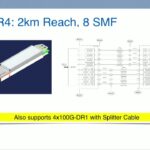Additional Resources Active SSL Introduction to Ixia’s Active SSL, https://www.ixiacom.com/resources/ixias-active-ssl-scott-register Best Practices for Monitoring Encrypted Data, White Paper, https://www.ixiacom.com/resources/best-practices-monitoring-encrypted-data Security in an Encrypted World, Solution Brief, https://www.ixiacom.com/resources/security-encrypted-world Active SSL page, https://www.ixiacom.com/activessl CloudLens: CloudLens Public Video, https://youtu.be/8PZK9dOQoNw Cloud Visibility for Dummies eBook, https://www.ixiacom.com/resources/cloud-visibility-dummies Cloud, https://www.ixiacom.com/products-services/cloud CloudLens, https://www.ixiacom.com/products/cloudlens CloudLens Public, https://www.ixiacom.com/products/cloudlens-public CloudLens Private, https://www.ixiacom.com/products/cloudlens-private
KEMP 360 Vision with Kurt Jung
Kurt Jung, Senior Technical Marketing Engineer at KEMP Technologies, reviews the KEMP 360 Vision. This is a proactive application delivery infrastructure built around alerting and escalation methodologies.
KEMP LoadMaster Clustering with Kurt Jung
Kurt Jung, Senior Technical Marketing Engineer at KEMP Technologies, reviews the methods used by their solutions to easily meet elastic demands in cloud infrastructure.
KEMP Deployment with Micheal Higgins
Micheal Higgins, Principal Technical Product Manager with KEMP Technologies, reviews what it takes to deliver an ADC. This includes everything from provisioning resources through starting a VM, obtaining a license, and configuring options.
KEMP Licensing and Consumption Models with Micheal Higgins
Micheal Higgins, Principal Technical Product Manager with KEMP Technologies, reviews how to move from legacy per-instance licensing and capacity planning models to a fabric based consumption approach built for the cloud.
KEMP Virtual Service Migration with Micheal Higgins
Micheal Higgins, Principal Technical Product Manager with KEMP Technologies, reviews how to streamline the migration of apps and their services in hybrid and multi-cloud environments with their application delivery solution.
KEMP 360 Application Delivery Fabric Introduction with Micheal Higgins
Micheal Higgins, Principal Technical Product Manager with KEMP Technologies, introduces the company’s Application Delivery Fabric to the delegates. This includes a definition of the solution and an understanding of why it’s important for modern application environments.
KEMP Introduction and Overview with Kurt Jung
Kurt Jung, Senior Technical Marketing Engineer at KEMP Technologies, introduces the company’s application delivery solutions to the delegates. The company has a range of application delivery controllers that can be deployed on virtual, cloud, and on-premise infrastructure.
Managing Security Zones with Apstra’s Damien Garros
Damien Garros, Customer Enablement Engineer at Apstra, reviews managing a security zone with the company’s intent-based networking platform.
Demonstrating Intent-Based Network Configuration with Apstra with Damien Garros
Damien Garros, Customer Enablement Engineer at Apstra, gives the delegates a demo of how to use their intent-based networking platform from a developers role. This includes the ability to add information to a schema to include information about applications and changing configs based on those applications.
Intent-Based Networking Introduction with Sasha Ratkovic of Apstra
Sasha Ratkovic, CTO and Founder of Apstra, spends this session cutting through the hype around intent-based networking. Sasha narrowly defines what Apstra means by intent. This isn’t simply a “correct” abstraction layer or a configuration management scheme. He outlines how intent is based on the outcome of automating the complete networking service lifecycle.
Apstra Automating Network Intent with Derick Winkworth
Derick Winkworth, Bit Wrangling Telepath and Beard Achiever at Apstra, gives an overview how developers can use the Apstra Operating System as a platform for building their own intent-based networking applications. These are the people implementing how the network gets automated. Derick further goes on to outline how networking is all in our heads, the […]
Arista Networks Routing Architecture Transformations with Russell Kelly
Russell Kelly, Technical Marketing Engineer, gives an overview of how Arista is positioned to attack the routing space, with a combination of silicon and programability. This is informed by a transformation in routing architecture based around cloud principles that have driven transformation in most other enterprise infrastructure already. He then gives an overview of the […]
Arista Networks Automation and Telemetry with Ryan Madsen
Ryan Madsen, Manager Software Engineering, begins this session why explaining why Arista entered into the crowded monitoring market. This was a response based on the customer need to obtain comprehensive state from boxes in real time. This leads into an overview of their answer, CloudVision Telemetry. He then reviews how the system operates in a […]
Arista EOS Programmability with Ken Duda
Ken Duda, Founder, CTO and SVP Software and Engineering at Arista, has worked in networking for decades, but is a programmer at heart. He reviews the how the EOS architecture is different from other switches, starting from it’s simplified single binary image. This allows for standardization across an entire environment. This is enhanced by their […]
Andy Bechtolsheim on the 400 Gigabit Landscape
Andy Bechtolsheim, Founder, Chief Development Officer and Chairman at Arista, reviews how Arista is preparing for the 400 Gigabit future. While 100G Ethernet is gaining ascendency now, by 2021 he sees the 400G port numbers reaching parity with 100G Ethernet. The optics for this will be powered by 100G per lane, as defined by the […]
Arista Introduction and Overview with Anshul Sadana
Anshul Sadana, SVP and Chief Customer Officer at Arista, updates the delegates on the state of Arista. The company has evolved from Leaf-Spine designs for data center networking and now has moved into spine interconnects between data centers. He also discusses the companies move into supporting IP storage, spine routing, cloud peering, and security monitoring.









